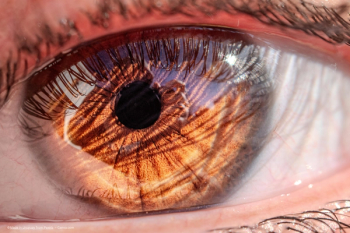
SLT: an expert's point of view
Long-term SLT experience
Key Points
Q What mechanism of action is SLT based on and does this affect the treatment and what do you consider the main difference between SLT and ALT?
For SLT treatment, it is assumed that the pigmented trabecular meshwork cells are selectively destroyed. As this is not a thermal laser treatment, there is no coagulation damage to the meshwork and the procedure can, therefore, be repeated. Postoperatively, a metaplastic process at the cellular level occurs which results in IOP reduction.
Q Who would you consider to be an ideal candidate and what would you judge to be a successful outcome of treatment?
Patients with primary open-angle glaucoma (POAG) and pseudoexfoliative glaucoma (PEX) are ideal. The mean IOP reduction in PEX is 35% and 17% in POAG. Success rates after two years (Kaplan-Meier survival curves) are also good in these conditions: 82% in PEX and 81% in POAG.
Additionally, patients who do not respond well to topical treatment, who are not compliant and those with allergies to medications or the preservatives in them are also good candidates for SLT.
The intraocular pressure reduction by SLT correlates positively with the degree of pigmentation of the chamber angle, patient's age and the level of baseline IOP prior to treatment. I would consider an IOP reduction of at least 20%, or a reduction in the number of topical medications with an unchanged IOP, to be a success.
Q Are there cases in which you would use SLT as a primary treatment and what has been your experience in these cases?
If glaucoma is newly-diagnosed, we leave the decision up to the patient as to whether they wish to undergo the laser procedure or whether they would prefer drug treatment. About 30% of our patients with newly-diagnosed glaucoma do decide to undergo SLT and our experience of it as initial therapy is good.
If, however, our patients prefer drug therapy, we will exhaust all drug options before an SLT procedure is considered.
Q If a glaucoma patient is already using topical medication, when would you perform SLT and why?
If the medication does not bring about a sufficient IOP reduction, or if progressive glaucomatous functional impairments occur, despite apparently good IOP regulation (i.e an increase in visual field loss or excavation of the papilla) or in cases of drug intolerance, we would then consider performing SLT.
Q Have you observed that patients require less topical medication following SLT?
We initially leave medications unchanged following the procedure, since it takes a few weeks to establish IOP reduction. If the IOP is then optimally adjusted, the eye drops can be either reduced or withdrawn.
We have also observed that the number of eye drops can often be reduced in the patients who were previously using several medications.
Q Under what circumstances do you repeat SLT and with what kind of results?
Since the number of successfully-treated glaucomatous eyes decrease over time, we usually only repeat SLT once, sometimes twice in affected patients. In the first repeat, therapeutic success is often similar to that of primary SLT. The second repeat is, however, hardly effective at all. In general, our impression is that better effects can be achieved even in repeat procedure patients who reacted to the first treatment with clear and long-lasting IOP reduction. Conversely, a repeat after inadequate IOP reduction following the primary procedure has little effect, even after a second treatment.
Newsletter
Get the essential updates shaping the future of pharma manufacturing and compliance—subscribe today to Pharmaceutical Technology and never miss a breakthrough.












































